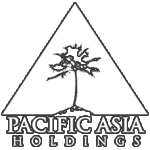The shrimp aquaculture sector has long – and not always unfairly – been associated with the destruction of mangroves in many tropical regions. However, Switzerland-based consultants and seafood traders Blueyou are backing a project which, they claim, can combine shrimp aquaculture with mangrove restoration – improving farmers’ livelihoods while rejuvenating the ecosystem services that mangroves provide.
The company has designed and implemented a range of small-scale fisheries- and aquaculture-related projects with economic and ecological sustainability as their core priorities, explains Walker and Selva Shrimp is one of the best known.
Originating in Southern Vietnam the project aims to promote silvofishery – a combination of forestry and aquaculture – with a focus on mangrove restoration and the extensive production of black tiger prawns (Penaeus monodon).
The model involves the cultivation of the shrimp in ponds of roughly 3-8 hectares which are partially covered in mangroves and are naturally topped-up every two weeks after the harvesting process. The ponds are stocked with tiger prawn post-larvae sourced from a local hatchery. Stocked at low densities, the young prawns grow to market size without the need for feeding, as the mangroves themselves help to provide natural food, including algae and invertebrates. Every two weeks (at the time of the full and new moons) much of the water is released at low tide, allowing a proportion of the shrimp to be harvested. The first harvest takes place three months after the PLs are stocked into the pond.
Blueyou was drawn to the area in 2012 by the prospect of promoting zero input aquaculture, as Walker explains.
“We stepped in and developed our own standards for these production systems. To achieve certification the farmers must have at least 40 percent of their ponds covered in mangroves, although this is usually closer to 50-60 percent. They are not allowed to use supplementary feed, or medicine, or fertilisers. The maximum stocking density is 22 PL/m2 , but most farmers stock at even lower levels – with no feed and no aeration, it depends on the natural carrying capacity of the ponds,” he says.
There are currently 3,350 farmers operating under the Selva Shrimp standard, in an area covering 17,000 hectares of Vietnam, and these produce on average 250 kg of shrimp per hectare per year.
“These farmers produce around 4,250 tonnes of shrimp a year between them, but we don’t have exclusivity over where they sell their shrimp, we probably only sell around a quarter of that tonnage,” Walker observes.
https://thefishsite.com/articles/restorative-aquaculture-selva-shrimp
